Our research target is developing novel and challenging organic reactions based on molecular catalysis, with structural modification of transition metal catalysts and organocatalysts, We have achieved (1) selective synthesis of chiral molecules using asymmetric catalysts, (2) efficient construction of functional molecules through C-H bond activation, and (3) direct transformation of unactivated aromatic compounds using designed sulfide catalysts.
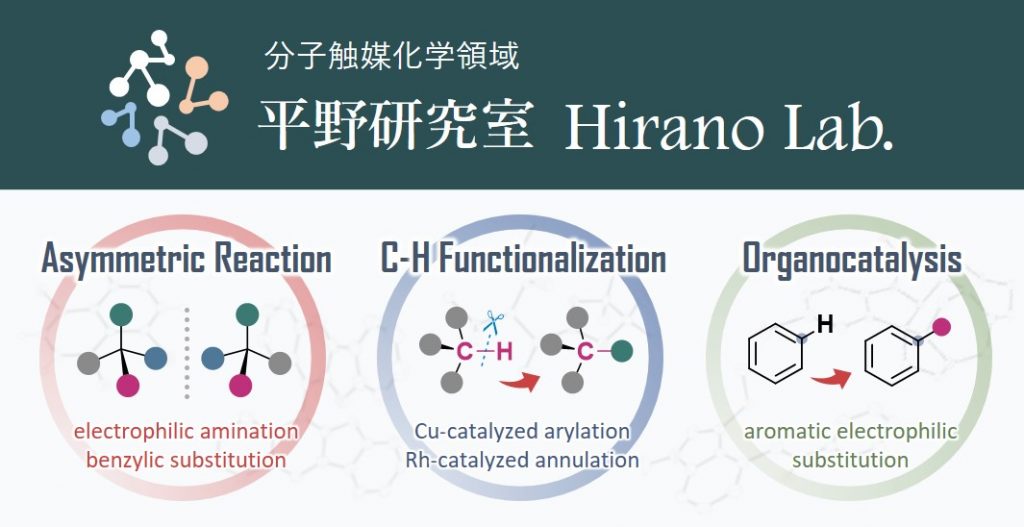
Our research is targeting toward designing unique and original metal complexes as catalysts for new organic transformations and clarifying their roles during the catalytic reactions. We especially focus on the development of transition metal complexes that can utilize readily available starting materials for complicated molecular synthesis with short reaction sequences and transform a targeted functional group within multi-functionalized organic molecules by using thermal, light, and electric energy. We also work on the catalyst development by combining both experimental and computational methods to optimize catalyst structures and elucidate the reaction mechanism.

We create functional materials that are useful for environmental protection and medical care and are friendly to humans and the environment, by using an appropriate combination of organic synthesis and molecular interactions. Currently we focus on (i) the development of molecular recognition materials that can efficiently remove harmful substances from water and oil, (ii) the development and application of micro- and nanostructures using self-organization of molecules, and (iii) the development and applications of highly efficient light-harvesting supramolecular assemblies.
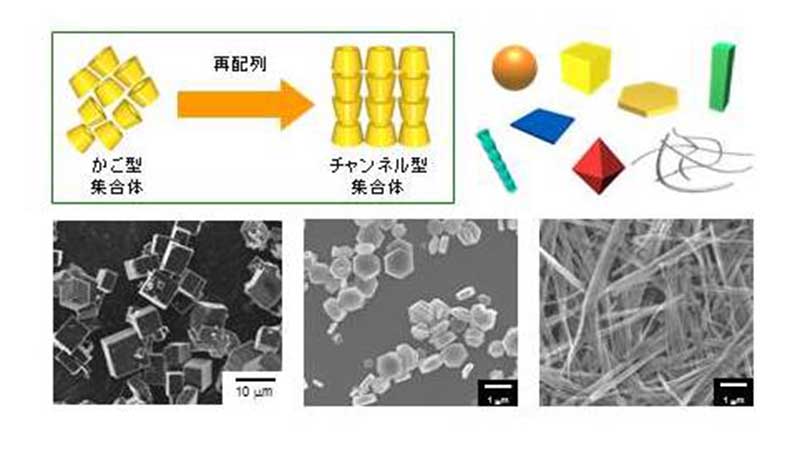
In our laboratory, we design and create high performance materials on the basis of molecular design in consideration of developments at an industrial level for the development of three dimensional (3D) tissues for drug discovery and regeneration medicine. The extracellular matrix (ECM) is the main component of cell microenvironments in all tissues and organs. ECM regulates cell microenvironments and various cell functions. Inspired by the function of ECM, we regulate microenvironment of cell surface using novel polymer materials to control cell functions for construction of 3D-tissues with functions and structures similar to natural tissues or organs.
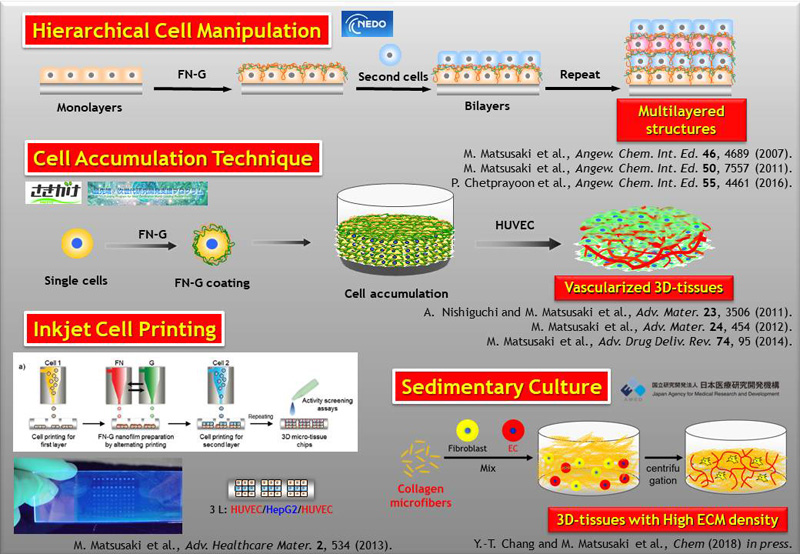
Our research is currently focused on designing a methodology for organic synthesis using novel organometallics and catalyst systems. Novel reactive organometallic species have been isolated and characterized based on spectroscopic methodology and X-ray crystallographic analysis. These species have been applied to the synthesis of functionalized organic compounds. Our group also focuses on utilizing characteristic Lewis acids in the conversion of carbon resources to valuable organic compounds. Metal complexes that have cage-shaped organic ligands are synthesized and used for new types of selective reactions for practical organic syntheses. We also target functionalized materials that are based on organic compounds with novel physical properties and special intramolecular interactions. All projects are supported by organic synthetic approaches that extend to various fields of chemistry.
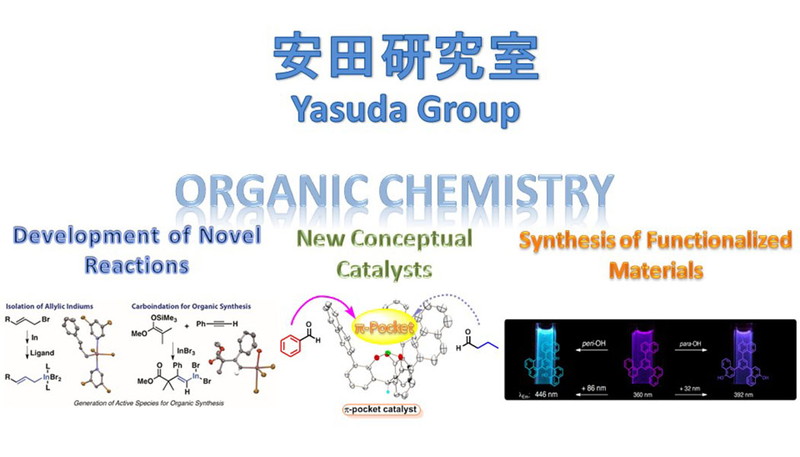
Artificial photosynthesis is a solar energy conversion technology that mimics natural photosynthesis, and considered to be one of the next big breakthroughs in the research field. Our group studies the development of functional metal complexes toward the realization of artificial photosynthesis.

Transition metal complexes serve as key players that mediate various reactions for synthesizing bioactive compounds and functional materials, and numerous transition metal complexes have been developed to date. The design of organic compounds (i.e., ligands) that support the metal center is crucial for imparting desired functions to transition metal complexes. We focus on designing original ligands and developing the synthesis and applications of transition metal complexes that maximize their external stimulus-responsive properties. We are also engaged in creating designed boron catalysts containing boron as a metalloid element and developing technologies that use crude H2.
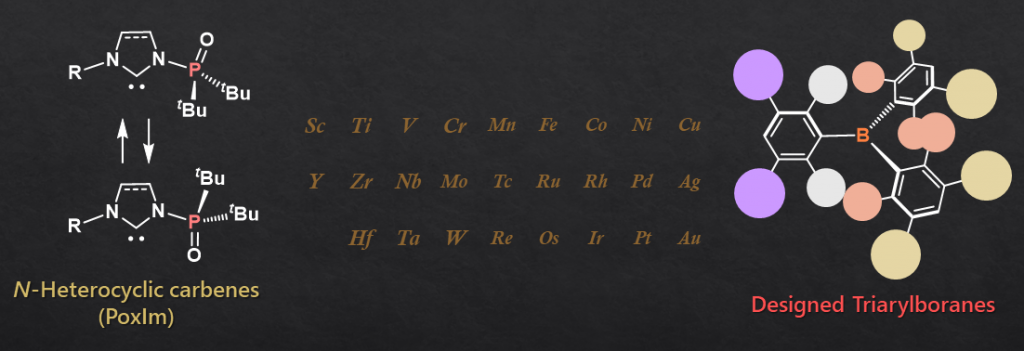
Our research interests span various aspects of organic chemistry, ranging from new reactions, new molecules, and new functions. Regarding the reaction development, our goal is to invent the synthetic methods that involve unprecedented mechanism or unusual bond transformation. We are also exploring design and synthesis of new functional complexes ligated with unique p-conjugated systems. We believe that the diversity of our research projects facilitates generating breakthrough ideas.
Representative research subjects include:
(1) Catalytic Reactions Involving Activation of Strong Chemical Bonds
(2) Unusual Reactions Using Main Group Elements
(3) Design and Synthesis of Complexes with Open-shell π-Conjugated Ligands
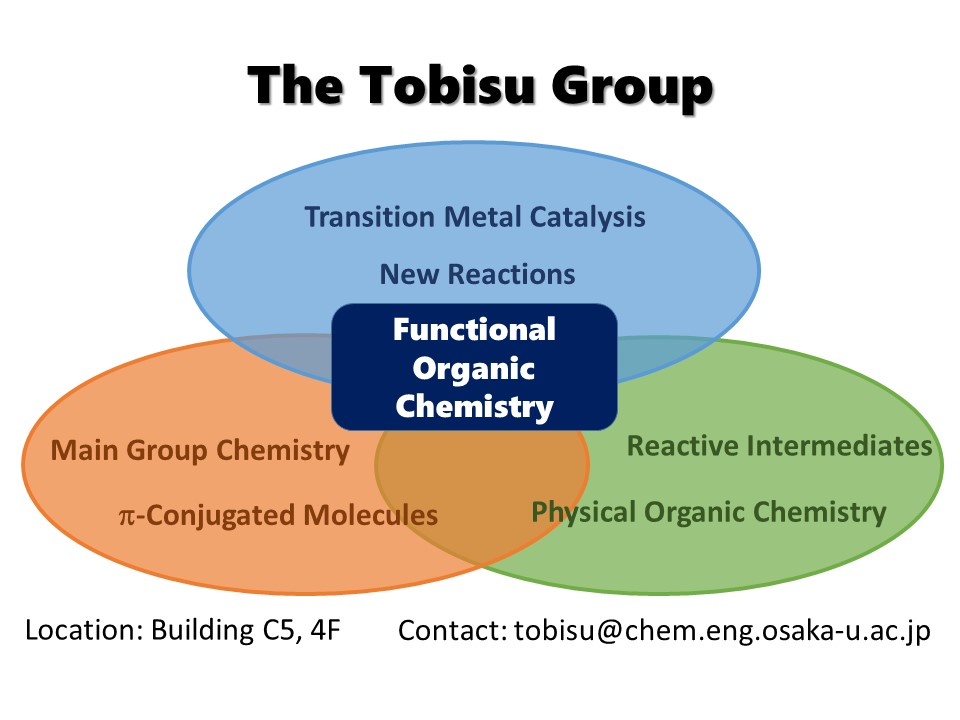
Chemical biology is an interdisciplinary research field, which focuses on elucidation of biological phenomena by utilizing “chemical tools”. These chemical tools are developed by the combinatorial use of organic chemistry, nanotechnology, and genetic engineering. In our group, we design and synthesize novel fluorescence and magnetic resonance imaging (MRI) probes that are applied to answer various biological questions. The representative examples of our chemical tools are fluorescence probes for detection of protein localization and enzymatic activity and MRI probes for in vivo imaging of cancer and gene expression. We develop new tools to give new findings that are not verified by conventional biological methods. By using these tools, we are currently studying various biological fields such as epigenetics, immunology, and cancer biology.
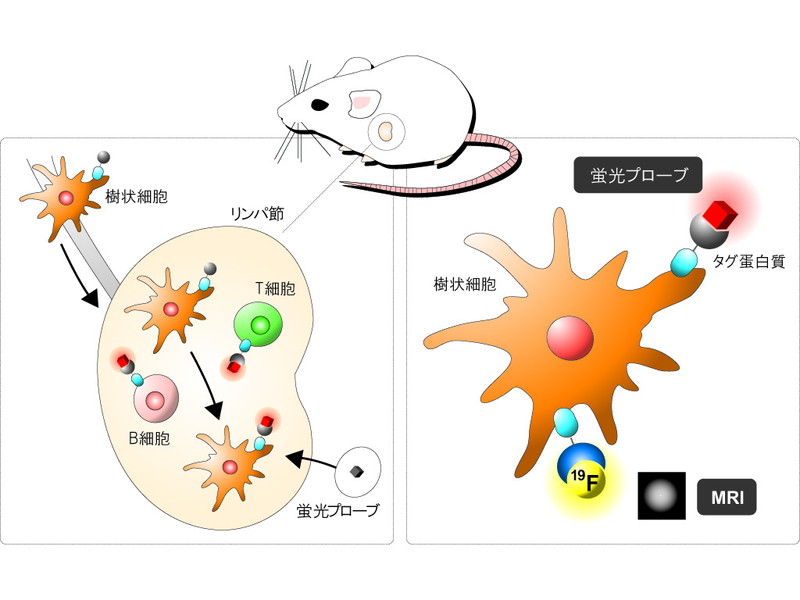
The general goal of our research is to understand enzymatic catalysis at a molecular level and develop environmentally benign bioinspired catalysts. Particular attention has focused on the redox chemistry of transition-metal reaction centers in biological systems. Our main approach involves synthetic modeling, i.e. biomimetic chemistry, including rational design and syntheses of ligands allowing formation of appropriate active site models for metalloenzymes. Enzymatic studies using advanced molecular biology techniques are also performed to develop metalloenzyme catalysts that can be applied to organic synthesis.
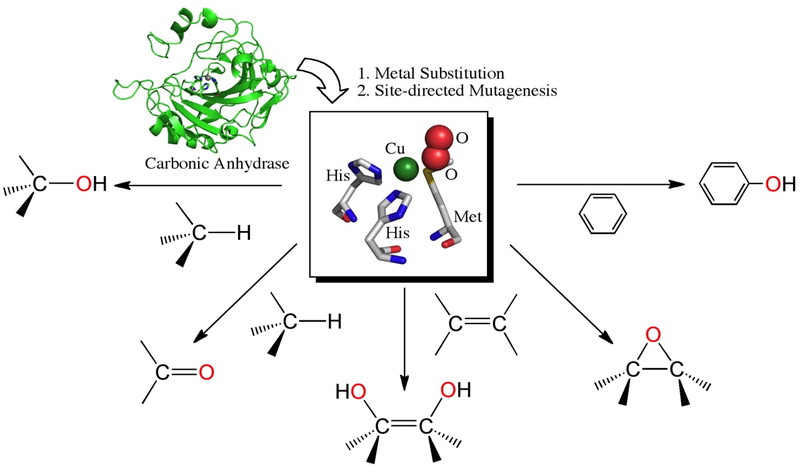
Molecular Reaction Chemistry Area
We are developing innovative materials by manipulating surfaces and interfaces through electrochemical approaches. Our current focus includes semiconductor nanoparticles that exhibit photoluminescence, aiming to visualize the flow of electrons via light. In addition, we are conducting fundamental research on binder-free electrodes and solid-state electrolytes to contribute to the development of next-generation batteries.
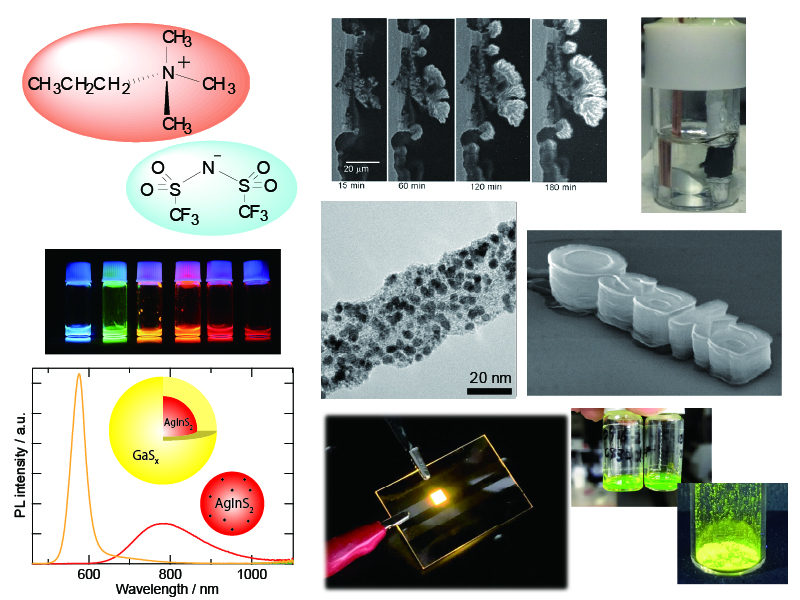
Our aim is to understand structure/function relationships of proteins. We visualize their three-dimensional structures at an atomic level by X-ray crystallography. To do this, we crystallize proteins and collect X-ray diffraction data from the crystals at SPring-8 or SACLA, and process the data with computers to reveal the electron-density maps. We then speculate the structure/function relationship and design novel molecules that control its function. Development of small-molecule medicines, the 3rd generation antibody drugs, and improvement of global environment and crop productivity are now in study.

Bowl-shaped π-conjugated compounds including partial structures of the fullerenes, which are called “buckybowls”, are of importance not only as model compounds of fullerenes but also as their own chemical and physical properties. Very few buckybowls has been achieved for preparation mainly due to their strained structure. We develop the rational route to the various buckybowls and investigate their physical properties. We also investigate to develop novel catalytic properties of metal nanoclusters. We focus on the following projects: Preparation of size-selective gold and gold-based alloy nanoclusters supported by hydrophilic polymers and its catalytic activity: Development of designer metal nanocluster catalyst using the highly-functionalized protective polymers.
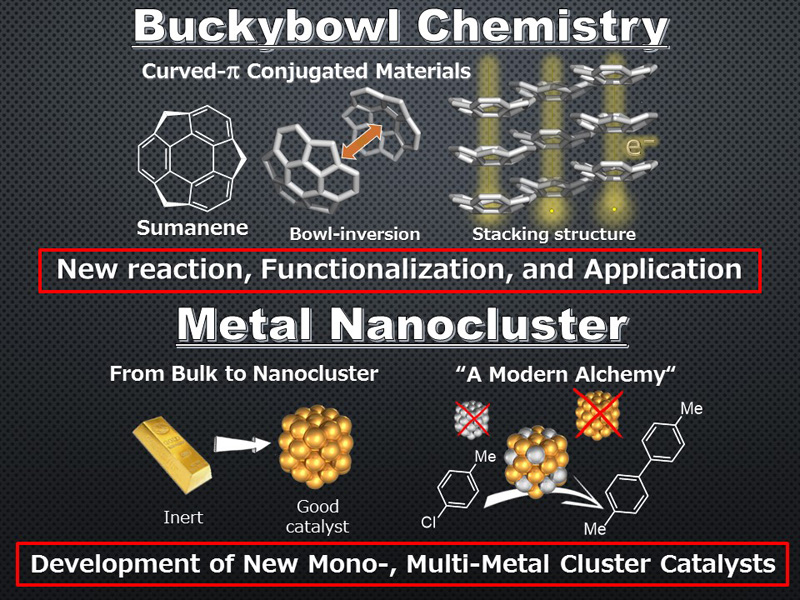
The main goal of our research is to develop a new scientific field based on “organic/inorganic chemistry” and “biotechnology”. Toward this goal, we are challenging to generate new biocatalysts and biomaterials beyond the scope of nature by using various organic compounds, transition metal complexes, biomolecules (such as proteins and DNA), and microorganisms. Current topics of our group are divided into the following three subjects: (1) Synthesis and evaluation of new porphyrinoids with well-designed cofactor structures, (2) Generation and evolutionary engineering of artificial metalloenzymes with synthetic metal cofactors, (3) Construction of highly-organized protein assemblies to provide new functional biomaterials.
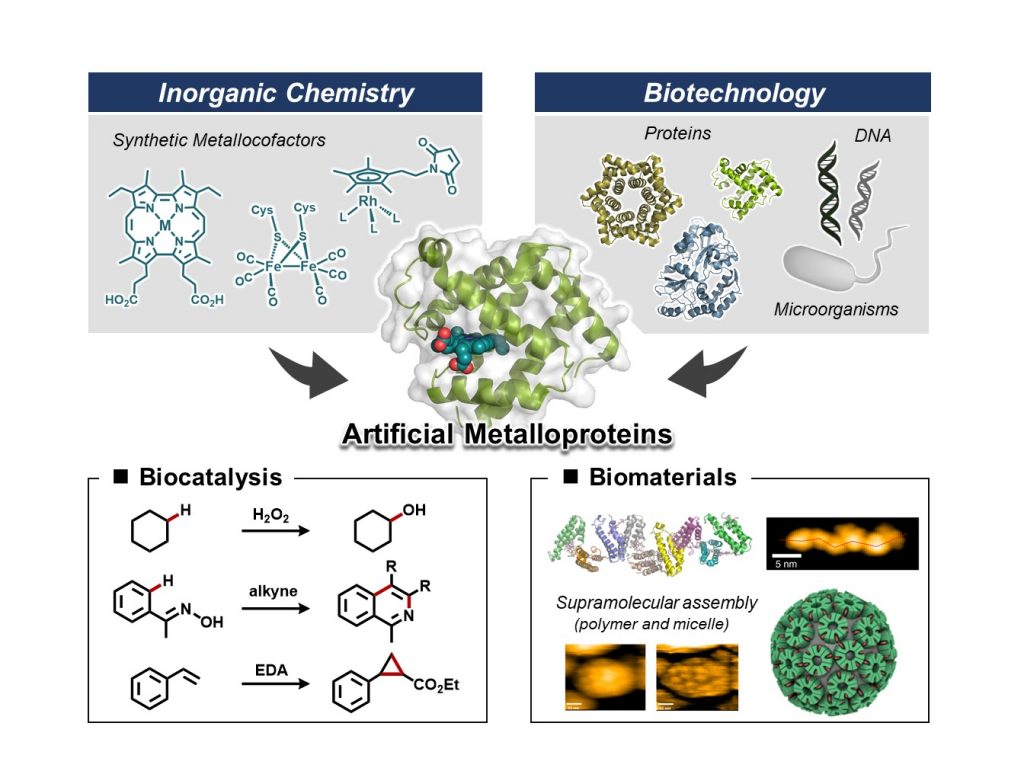
Research in our group seeks to bring the experience and tactics of strategies of organic methodology development based on synthesis of potential molecules. Especially, our interests are focused on efficient, selective, and environmentally benign methodologies for synthesis of valuable molecules. The new methods have been developed for the synthesis of useful molecules as building blocks for organic synthesis, fullerene derivatives directing toward functional materials, and natural products.
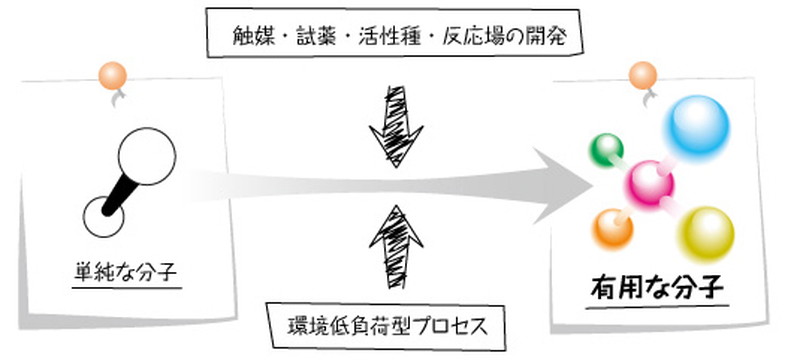
When atoms condense, solids form and exhibit physical properties that we cannot imagine. We focus on inorganic solids, such as transition metal oxides, and promote solid-state chemistry research by synthesizing epitaxial films and bulk samples with atomically controlled structures and exploring their physical properties. We are developing various functional materials such as two-dimensional ferroelectrics, hydrogen storage oxides, ion-conducting solids, and environmental catalysts.
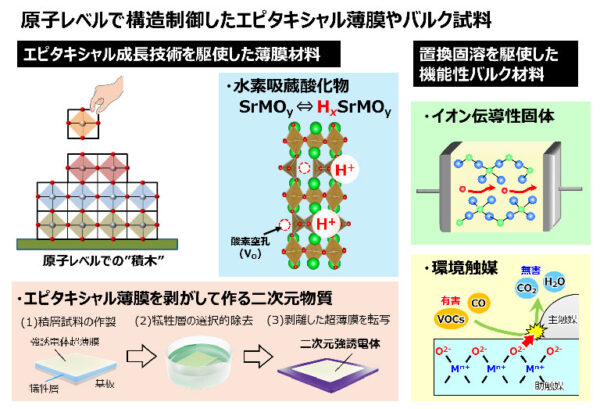
Polymer materials chemistry area deals with new functional polymeric materials on the basis of our original designs and syntheses. We have developed a new class of biomass plastics from renewable resources including originally designed cellulose nanofibers and biopolyesters, a new fabrication method of nanoporous polymer monoliths and their applications in medical, environmental, and energy fields, and adhesive method for hydrogels.
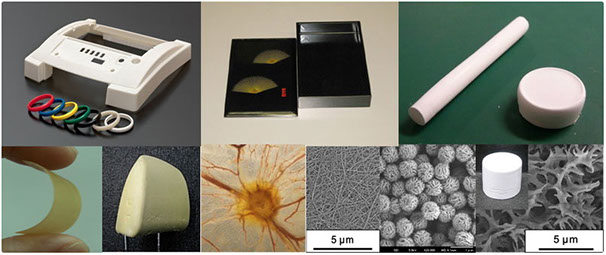
Our research targets are (1) formation of hierarchical nanostructure of soft materials such as polymers, molecules, and organic-inorganic hybrid materials, (2) development of novel measurement technique, and (3) design and synthesis of conjugated polymer materials having optical, electrical, and magnetic response aiming at application such as organic photovoltaics and functional devices. These materials are utilized in nano-structuring and functionalization, which is characterized at single molecular level.
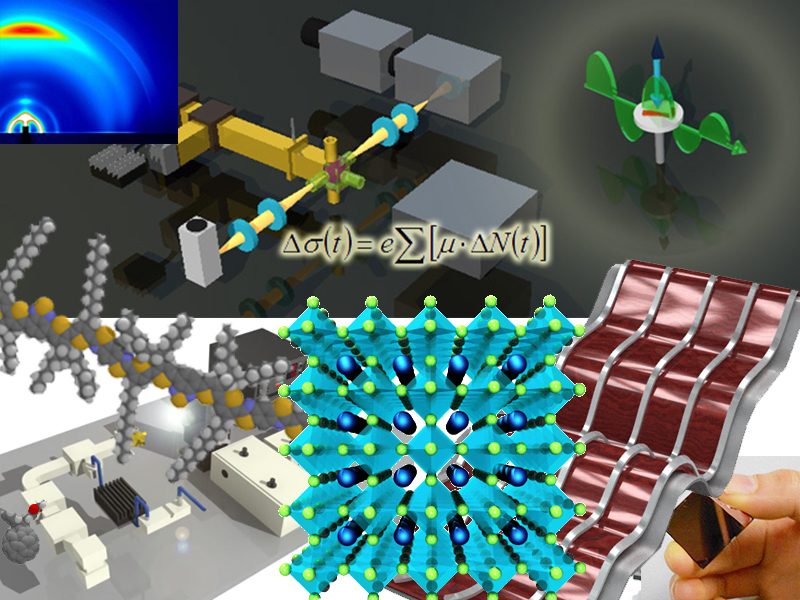
Organic Electronic Materials Science Area
We have been studying organic electronic materials and their application to electronic devices such as organic light-emitting diodes, organic thin-film transistors and organic solar cells. We intend to develop new concept devices and materials by understanding fundamental properties of organic materials. This interdisciplinary field includes a wide range of academic area from organic chemistry for designing one molecule to physical chemistry for understanding solid state properties, and device physics based on semiconductor engineering for improving performances.
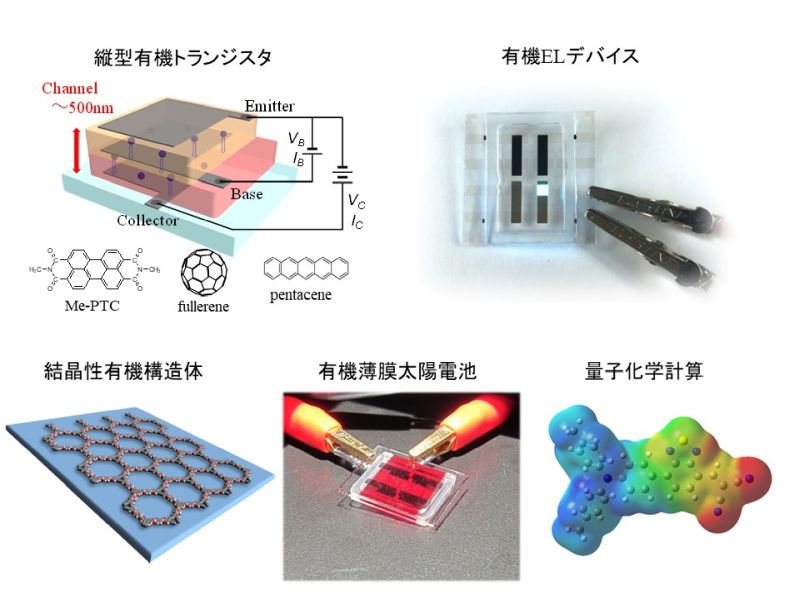
We design and synthesize a wide variety of new inorganic solid materials, mainly alloys and ceramics, to develop innovative catalysts. The reactions include effective utilization of shale gas and CO2, hydrogen production, and nitrogen conversion, aiming to create catalysts that can contribute greatly to the development of the chemical industry and the improvement of the global environment. We also aim to elucidate the principle of catalysis in detail in an atomic level from a physicochemical viewpoint, and to pursue and advance fundamental science.
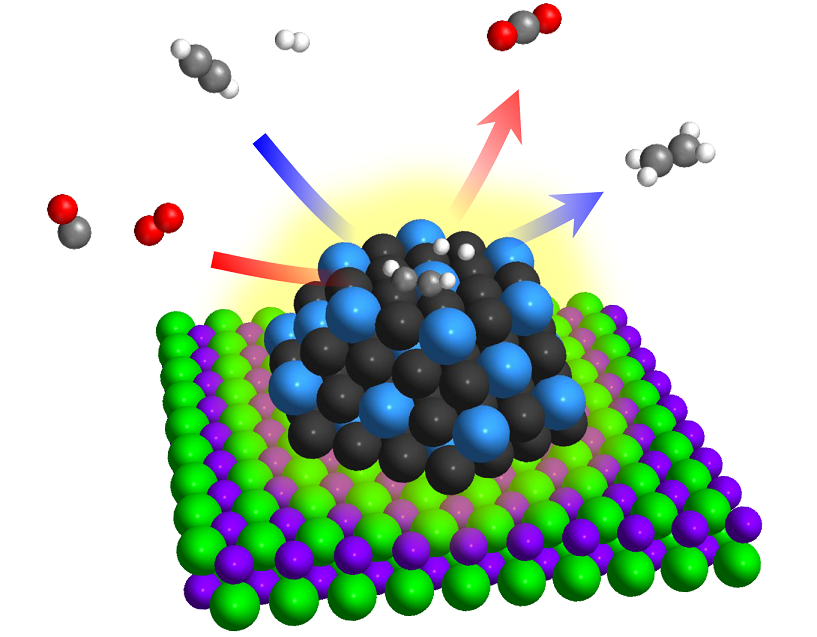
Based on photo- and radiation-induced chemistry of organic and inorganic compounds, we are studying chemistry of highly reactive intermediates, new synthetic chemistry, and new molecular devices and functional materials including photofunctional surface and biomolecular systems.
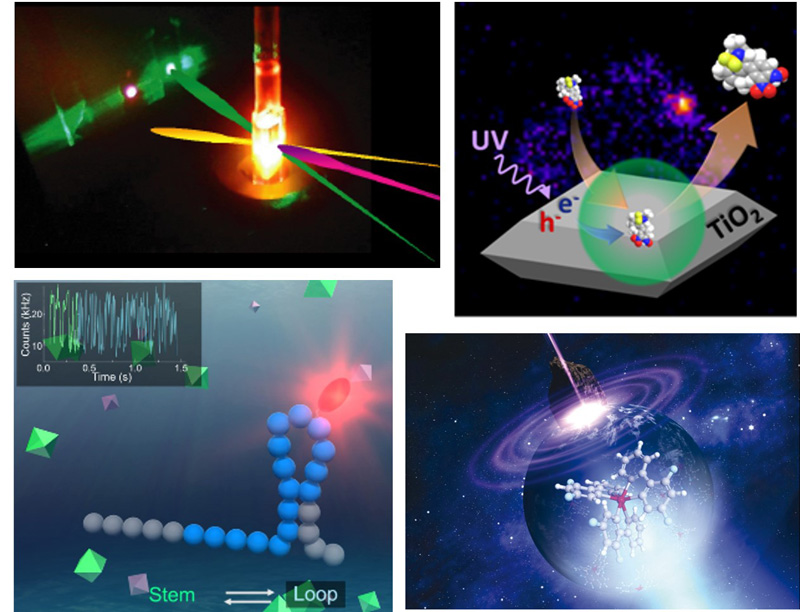
Our main subject is the development of novel molecule-based materials with promising electronic and photoelectronic properties for organic and molecular electronics. The research is based on the elucidation of the relationship between molecular structures and physical properties to control and improve the functions. We conduct integrated research: molecular design/synthesis, physical/chemical properties, and application of these organic semiconductors to electronic devices such as organic field-effect transistor (OFET), organic solar cells (OSC), and single-molecule electronics.
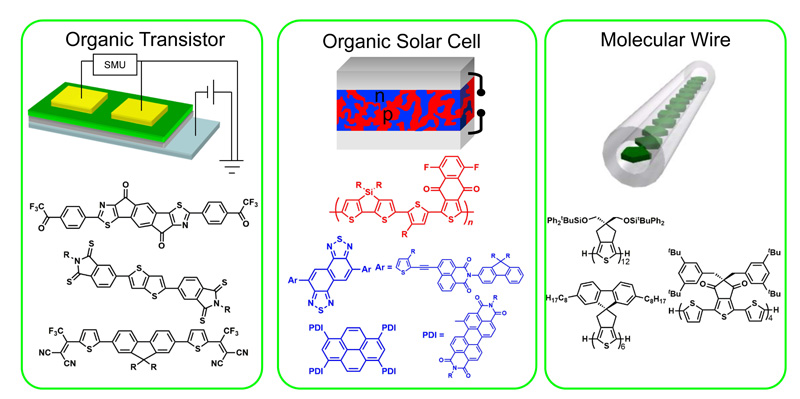
This center is currently investigating the asymmetric photochemistry and chiral luminsecence materials, and highly selective and sensitive methods for the analysis of hazardous chemical substances.
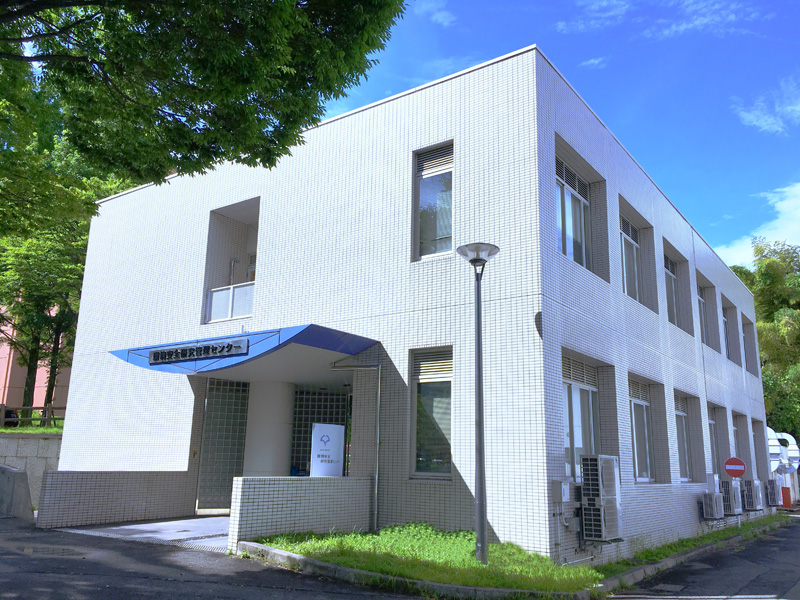
Department of Functionalized Natural Materials [The Institute of Scientific and Industrial Research]
Cellulose is the most common and abundant bioresources, mainly originating from higher plants. We extract cellulose nanofibers with widths of 3-15 nm from wood pulp, and are currently conducting the development of various cellulose nanofiber-based materials, such as transparent paper, for electronic, catalytic.

The industrial application of quantum beam will rapidly expand in the field such as high-volume production of semiconductor devices. In Department of Beam Materials Science, the radiation-induced chemical reaction and reaction field have been investigated using state-of-the-art quantum beam (electron, extreme ultraviolet radiation, laser, synchrotron radiation, X-ray, gamma-ray, ion beam). We have studied the chemical reaction system from the energy deposition on materials to the expression of material function. On the basis of these studies, we have designed a noble chemical reaction system.

Top
